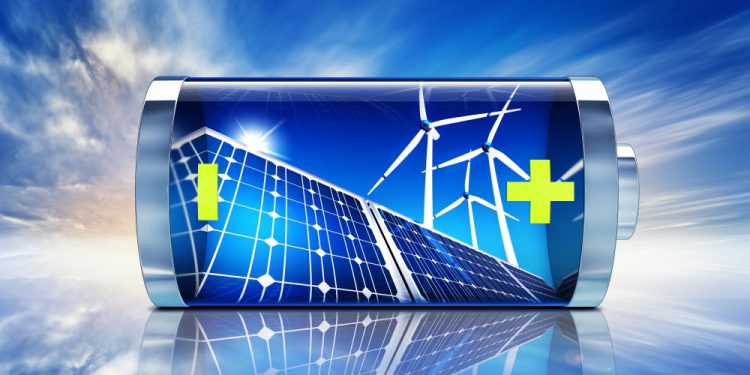Research team lead by Dr. Naseem Iqbal from USPCAS-E, NUST and Dr. Zahid Ali Gahzi from University of Peshawar, are developing a highly energy density electrode material for Lithium (Li)-based batteries and supercapacitors in a project under local challenge fund (LCF) research grant by Higher Education Commission (HEC).
Although, the commercial rechargeable Lithium-ion batteries and supercapacitors are promising candidates for storing/supplying electrical energy, and have served humans for decades. Yet, Li-based batteries/supercapacitors also have some serious problems, such as short life cycle, low practical capacity (about 50-60% of the theoretical capacity) and safety concerns. Although, this technology has been successfully used for powering portable electronic devices, such as laptops, mobile phone, and electric vehicles yet, for power load-leveling and long rage electric vehicles, the discovery of new Li-based battery technologies with higher volumetric energy and gravimetric densities is desired. Therefore, solving these problems has become very crucial in order to make Li-batteries and supercapacitors a more reliable technology.
![Figure 1 Practical specific energies for some rechargeable batteries, along with estimated driving distances and pack prices [1]](https://researchblog.nust.edu.pk/wp-content/uploads/2021/07/Figure-1-Practical-specific-energies-for-some-rechargeable-batteries-along-with-estimated-300x203.jpg)
In this project, huge research efforts will be devoted in developing environmentally friendly, stable and cost effective rechargeable Li-batteries/supercapacitors, and to partially solve the scientific issue involved in these technologies. The feasibility of innovative lab-developed ideas will be confirmed through pilot scale experiments/fabrication, and the product will then be sent to the industry for large scale manufacturing of Li-batteries and supercapacitors. To do so, there will be a close collaboration with various national and international scientists, and organizations.
![Figure 2: Ragone plot for different types of electrochemical energy storage devices [2]](https://researchblog.nust.edu.pk/wp-content/uploads/2021/07/Figure-2-Ragone-plot-for-different-types-of-electrochemical-energy-storage-devices-2-300x221.jpg)
We expect that the successful completion of this project will lead to the local manufacturing of Li-batteries/supercapacitors in Pakistan, and will help mitigate the energy related problems. We expect that such collaboration among national-international scientists-and-industry will lay the foundation of introducing the concept of electrochemical energy storage/conversion technology in Pakistan, and will provide some innovative insights for the modification and future large-scale applications and commercialization of Li-batteries and supercapacitors. Research group lead by Dr. Naseem Iqbal at USPCAS-E NUST is already active in research area of materials for Li-ion batteries and supercapacitors [2-6].
This project worth Rs. 39 million is awarded by Higher Education Commission (HEC) under local challenge fund (LCF). This research team lead by Dr. Naseem Iqbal (NUST) and Dr. Zahid Ali Gahzi (University of Peshawar), consisting of various national/international scientists and sectoral partners, is fully devoted to discover novel materials for use in Li-based batteries and advanced supercapacitors, and their subsequent commercialization under this project.
References
[1] J. M. Tarascon, M. Armand, Issues and challenges facing rechargeable lithium batteries. Nature. 2001, 414, 359-367. https://doi.org/10.1142/9789814317665_0024
[2] Rabia Ahmad, Usman Ali Khan, Naseem Iqbal and Tayyaba Noor, Zeolitic imidazolate framework (ZIF)-derived porous carbon materials for supercapacitors: an overview, RSC Adv., 2020, 10, 43733-43750. https://doi.org/10.1039/D0RA08560J
[3] Usman Ali Khan, Naseem Iqbal, Tayyaba Noor, Rabia Ahmad, Awais Ahmad, Junkuo Gao, Zain Amjad, Abdul Wahab, Cerium based metal organic framework derived composite with reduced graphene oxide as efficient supercapacitor electrode, Journal of Energy Storage, 41, 2021, 102999. https://doi.org/10.1016/j.est.2021.102999
[4] M. Z. Arif, N. Iqbal, R. Mahek, T. Noor, and A. Khan, “Molybdenum-doped lithium vanadium phosphate (Li3MoxV2− x (PO4) 3/C) as cathode material in lithium ion batteries,” Journal of Materials Science: Materials in Electronics, 2021, 1-13. https://doi.org/10.1007/s10854-021-06222-9
[5] S. Ashraf, R. Mehek, N. Iqbal, T. Noor, G. Ali, A. Wahab., “ZIF 67 derived Co–Sn composites with-doped nanoporous carbon as anode material for Li-ion batteries,” Materials Chemistry and Physics, 2021, 124824. https://doi.org/10.1016/j.matchemphys.2021.124824
[6] Rabia Ahmad, Naseem Iqbal, Mutawara Mahmood Baig, Tayyaba Noor, Ghulam Ali, Iftikhar Hussain Gul, ZIF-67 derived nitrogen doped CNTs decorated with sulfur and Ni(OH)2 as potential electrode material for high-performance supercapacitors, Electrochemica Acta, 364, 2020, 137147. https://doi.org/10.1016/j.electacta.2020.137147
The Author is a Professor at Energy Systems Engineering department, US Pakistan Center for Advanced Studies in Energy (USPCAS-E), National University of Sciences and Technology (NUST) and can be reached at naseem@uspcase.nust.edu.pk





